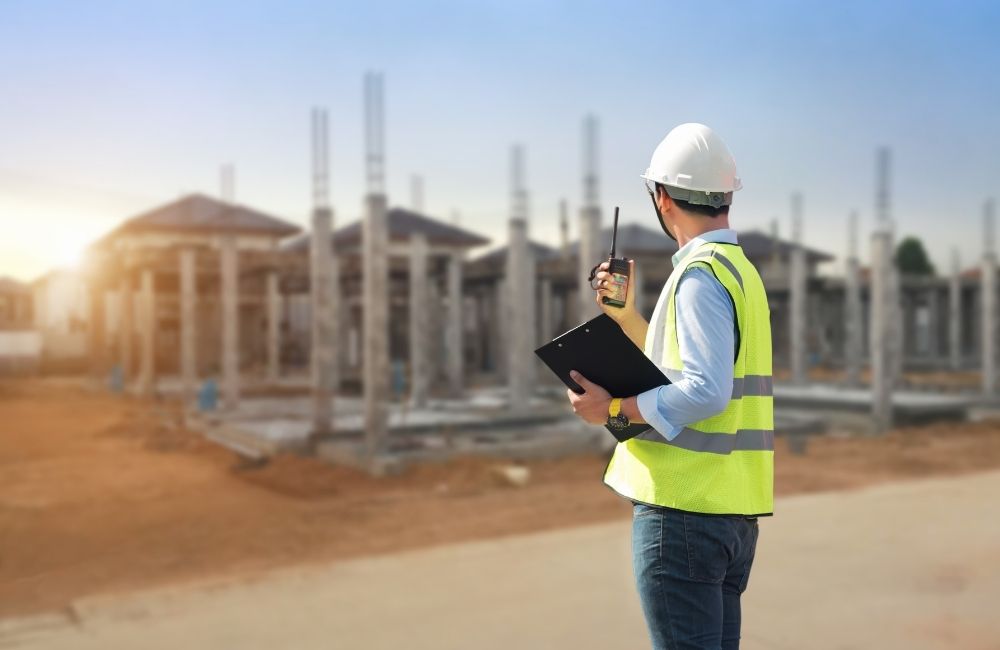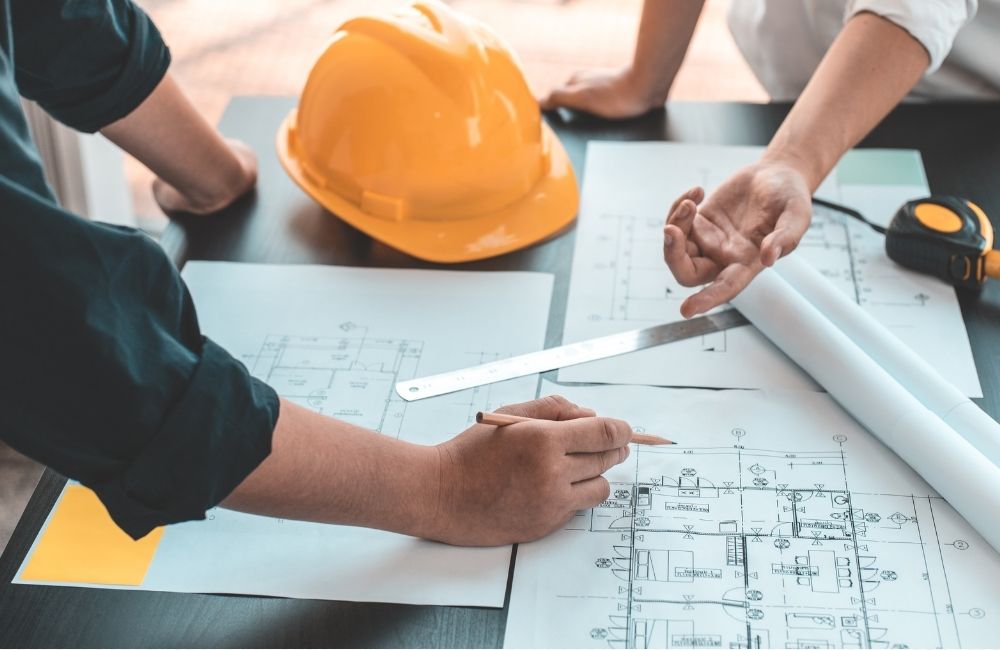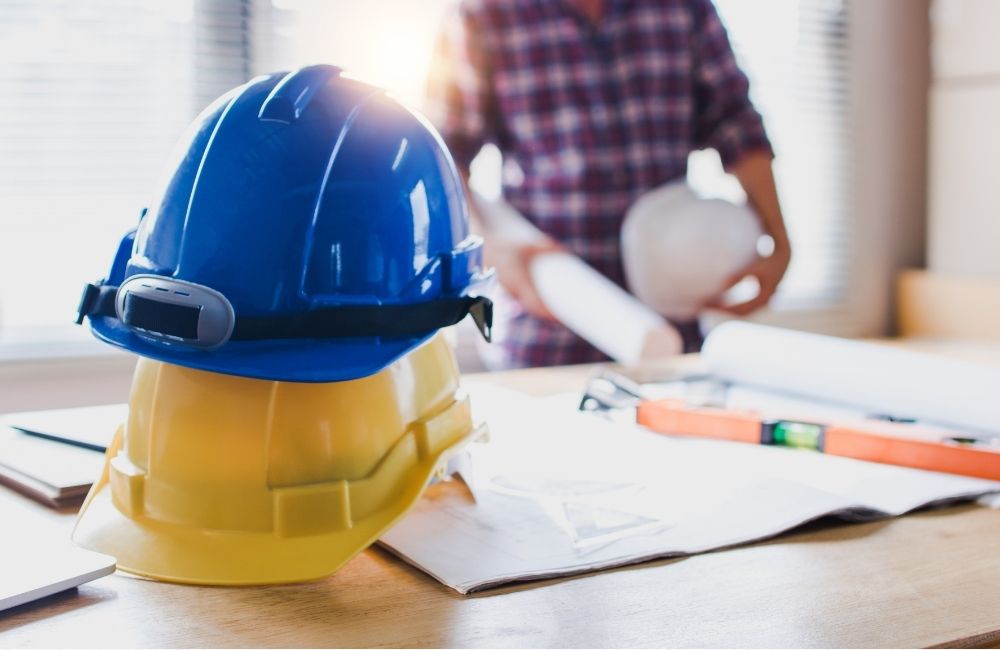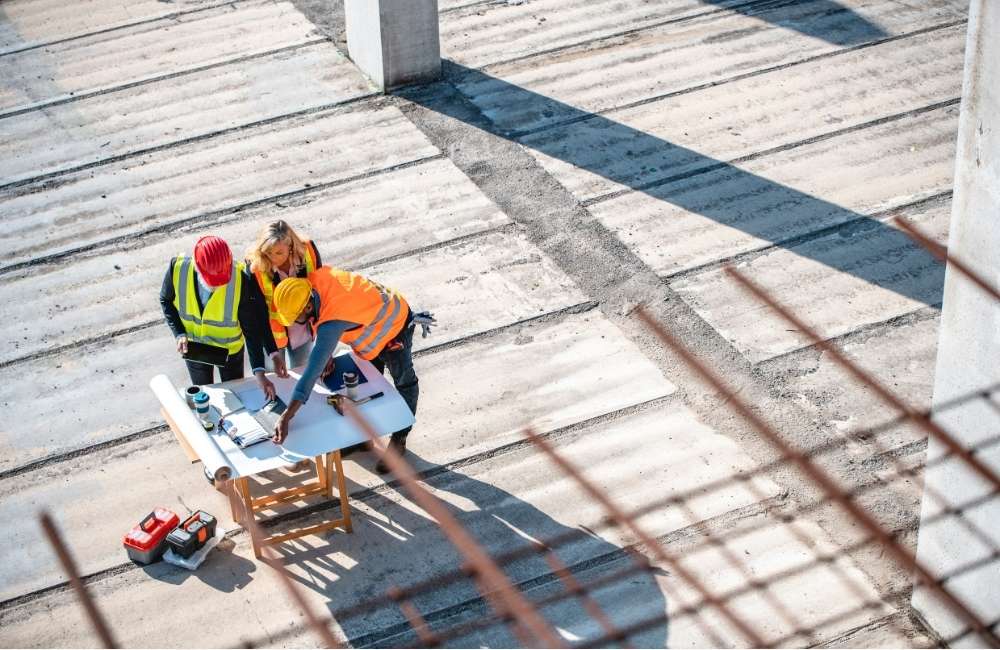Table of Contents
Key Takeaways
7 Popular Commercial Building Types
- 1. Office Buildings
- 2. Retail Buildings
- 3. Industrial Buildings
- 4. Hospitality Buildings
- 5. Multifamily Residential Buildings
- 6. Healthcare Buildings
- 7. Mixed-Use Buildings
Frequently Asked Questions
Choose Claris Design•Build for Expert Commercial Building Solutions!
Key Takeaways✔ Office buildings are designed for administrative and professional business activities. ✔ Retail buildings house businesses providing goods and services to consumers. ✔ Industrial buildings are essential for manufacturing, storage, and distribution. ✔ Hospitality buildings cater to travelers with accommodations and amenities. ✔ Multifamily residential buildings generate rental income through multiple housing units. ✔ Healthcare buildings support medical services and the healthcare industry. ✔ Mixed-use buildings blend residential, retail, and commercial spaces for urban efficiency. |
Commercial buildings play a vital role in shaping the economy, providing essential spaces for businesses, services, and industries. These structures vary widely in design, purpose, and scale, catering to the unique needs of their occupants. Understanding the types of commercial buildings is crucial for developers, investors, and businesses to ensure that their requirements align with the specific features of a property.
Here are the different types of commercial buildings and their functions, shedding light on their importance and role in the economy.
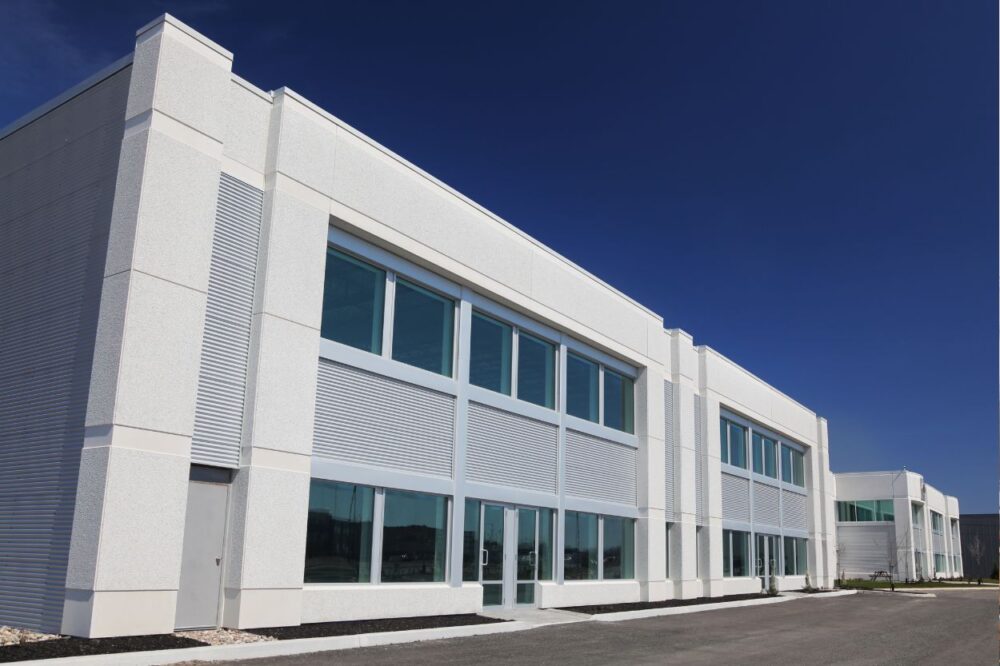
7 Popular Commercial Building Types
1. Office Buildings
One of the most recognizable types of commercial buildings is the office building. These spaces are primarily used for administrative, managerial, and professional purposes. Office buildings can range in size from towering skyscrapers in urban centers to smaller office parks in suburban areas.
- High-Rise Office Buildings: These are typically located in city centers and stand several stories tall, often housing multiple businesses or corporations. High-rise office buildings are known for their premium locations and amenities such as elevators, parking garages, and conference rooms.
- Mid-Rise Office Buildings: Mid-rise structures are generally 5 to 12 stories tall and may be found in both urban and suburban areas. These commercial buildings offer a balance between space and accessibility, catering to a mix of small and medium-sized businesses.
- Low-Rise Office Buildings: Low-rise buildings are typically less than 5 stories and are often found in business parks or suburban settings. They may cater to small businesses, medical offices, or local government services.
2. Retail Buildings
Retail buildings are another crucial category of commercial buildings, serving as hubs for consumer interaction and commerce. These structures house businesses that sell goods or services directly to the public.
- Shopping Malls: These large commercial buildings host a variety of retail stores, restaurants, and entertainment venues under one roof. Shopping malls are designed to attract a high volume of foot traffic, with ample parking and amenities such as food courts and cinemas.
- Standalone Stores: These individual retail spaces are often occupied by a single business, such as a convenience store, restaurant, or specialty shop. Standalone retail buildings can be found in urban, suburban, and rural settings, offering flexibility in location and size.
- Strip Malls: Strip malls are clusters of retail spaces located in a linear configuration, typically with parking in front. These commercial buildings are common in suburban areas and house a variety of businesses, from grocery stores to small local shops.
3. Industrial Buildings
Industrial buildings are commercial properties that facilitate manufacturing, storage, and distribution. These buildings are essential for the functioning of supply chains and often occupy large tracts of land, particularly in industrial zones or near major transportation routes.
- Warehouses: Warehouses are used primarily for the storage of goods before they are distributed to retailers or other businesses. These commercial buildings are designed to accommodate large inventories, with high ceilings, loading docks, and wide-open spaces for efficient storage and handling.
- Factories: Factories are industrial buildings where goods are produced or assembled. These structures are designed with specialized machinery and equipment in mind, making them suitable for manufacturing operations in industries such as automotive, electronics, and textiles.
- Distribution Centers: Distribution centers serve as hubs for the quick processing and movement of goods. These commercial buildings are strategically located near highways, ports, and airports to facilitate the rapid shipment of products to retailers or end customers.
4. Hospitality Buildings
Hospitality buildings are a unique subset of commercial buildings, focused on providing accommodations, food, and entertainment to travelers, including tourists, business travelers, and event attendees. As of 2023, there are 107,902 Hotels & Motels businesses in the U.S., with the number of businesses in this industry remaining steady over the five years between 2018 and 2023.
- Hotels: Hotels are commercial buildings that provide short-term lodging to guests. They vary widely in size, from small boutique hotels to large luxury resorts. Hotels often include additional amenities such as restaurants, meeting rooms, and recreational facilities.
- Resorts: Resorts offer a more comprehensive experience, often located in scenic or tourist-friendly areas. These commercial buildings cater to leisure travelers, providing amenities such as spas, golf courses, and entertainment options.
- Motels: Motels are typically smaller and more affordable than hotels, often located along highways. They offer basic accommodations and parking, making them ideal for road travelers.
5. Multifamily Residential Buildings
Multifamily residential buildings are a unique category of commercial buildings, offering housing solutions that generate rental income. These properties are managed by real estate companies or property management firms to ensure the smooth operation and maintenance of the building.
- Apartment Complexes: Apartment buildings are commercial properties designed to house multiple tenants in individual units. They can range from small complexes with a handful of units to large, multi-story buildings with hundreds of apartments.
- Condominiums: Condominiums (condos) are similar to apartment buildings, but the units are individually owned rather than rented. These commercial buildings offer a mix of personal ownership and shared amenities such as gyms, pools, or community centers.
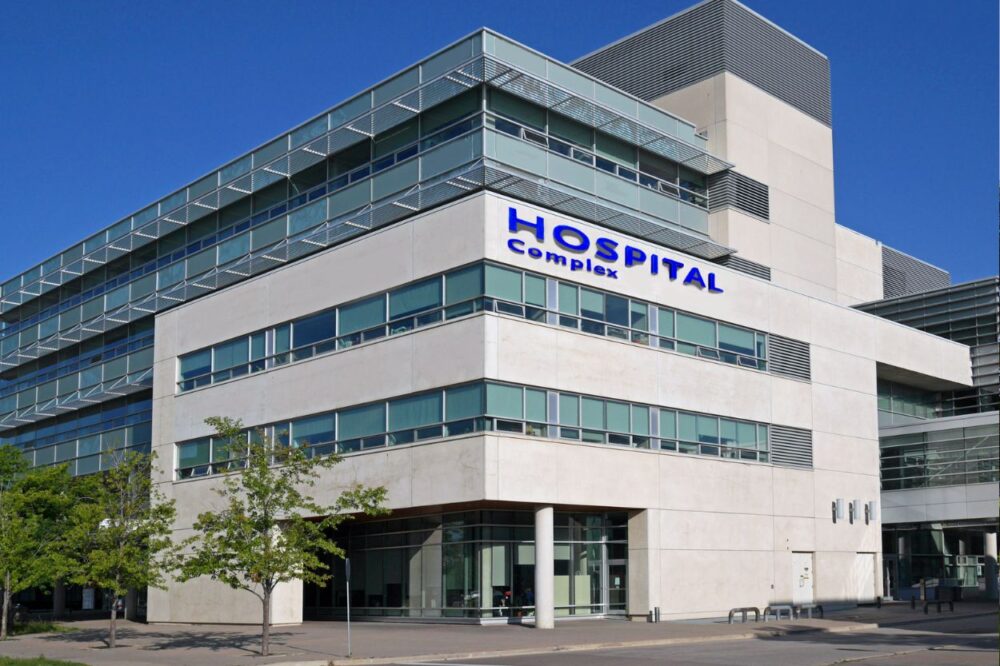
6. Healthcare Buildings
Healthcare buildings are specialized commercial properties designed to accommodate medical services and facilities. With 6,120 hospitals in the United States, these structures are critical to the healthcare system, providing essential spaces for doctors, nurses, and healthcare professionals to deliver care to patients.
- Hospitals: Hospitals are large commercial buildings that offer comprehensive medical services, including emergency care, surgeries, and inpatient treatment. They are often located in city centers or suburban areas to serve a large population.
- Clinics: Clinics are smaller than hospitals and focus on outpatient services such as routine check-ups, diagnostics, and minor procedures. These commercial buildings are often located in neighborhoods or shopping centers for easy access.
- Urgent Care Centers: Urgent care centers provide immediate, non-emergency medical treatment. These commercial buildings offer extended hours and are conveniently located to treat patients without the need for hospital admission.
7. Mixed-Use Buildings
Mixed-use buildings combine residential, commercial, and sometimes industrial spaces within a single structure. Mixed-use buildings provide flexibility and efficiency, allowing developers to maximize the value of a single property. These commercial buildings are commonly found in urban areas, where space is at a premium, and developers seek to maximize the functionality of their properties.
- Residential Units: Apartments or condos are often located on the upper floors of mixed-use buildings.
- Retail or Office Spaces: The lower floors may house retail shops, restaurants, or office spaces.
- Convenient Access: These buildings offer a unique blend of living, working, and shopping in one location, making them highly desirable in urban environments.
Frequently Asked Questions
What factors should be considered before constructing a commercial building?
Key considerations include location, budget, zoning laws, and accessibility. The building should be in an area with high foot traffic or ease of transportation for employees and customers. Sustainability and energy efficiency have become increasingly important, affecting design and construction decisions.
What are the legal requirements for constructing a commercial building?
Commercial buildings must comply with local zoning laws, building codes, and safety regulations. These include standards for fire safety, accessibility (like ADA compliance in the U.S.), and structural integrity. Developers may also need to secure permits for construction, electricity, and plumbing. Regular inspections ensure that these buildings meet ongoing safety and environmental standards.
What is the typical process for designing a commercial building?
The design process starts with understanding the business needs and the intended use of the building. Architects then create plans that consider functionality, aesthetics, and compliance with local regulations. After receiving approvals, engineers and contractors collaborate to ensure the design is feasible for construction. The process involves multiple stages, including design development, construction documents, and final project management.
How important is sustainability in commercial building construction?
Sustainability has become a major focus in commercial construction, with a growing emphasis on energy efficiency and green building certifications like LEED. Utilizing renewable energy sources, efficient HVAC systems, and sustainable materials can lower operating costs over time. Buildings designed with sustainability in mind are also more attractive to tenants and clients who prioritize eco-friendly practices. Governments may offer incentives for businesses that incorporate these sustainable practices.
What are the maintenance needs for a commercial building?
Regular maintenance is crucial for ensuring the safety, functionality, and longevity of a commercial building. This includes HVAC system upkeep, structural inspections, and ensuring fire safety measures are functional. Maintenance schedules should also account for cleaning and repairs, particularly for high-traffic areas like entrances or elevators. Proper maintenance can reduce long-term costs by preventing expensive repairs and extending the building’s lifespan.

Choose Claris Design•Build for Expert Commercial Building Solutions!
Claris Design•Build offers unparalleled expertise in architecture, engineering, and commercial construction, with a specialized focus on a wide range of industries including auto dealerships, healthcare, recreation, and manufacturing. Whether you're looking to build a state-of-the-art facility or improve an existing property, Claris is equipped to handle every aspect of your project, from site selection and evaluation to cost analysis and property management. As an award-winning dealer for Butler steel building systems, Claris ensures quality and precision in every project.
Let Claris help bring your commercial building vision to life with our comprehensive design-build services.



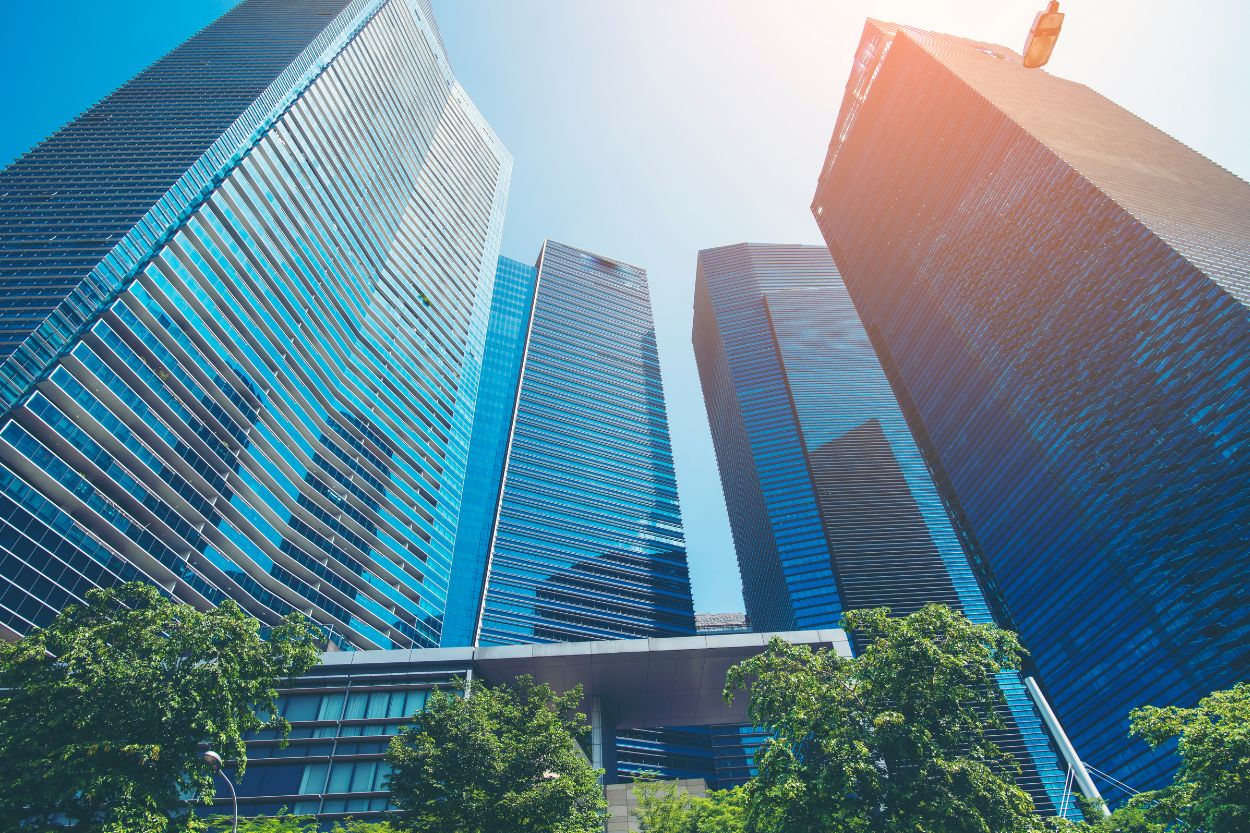
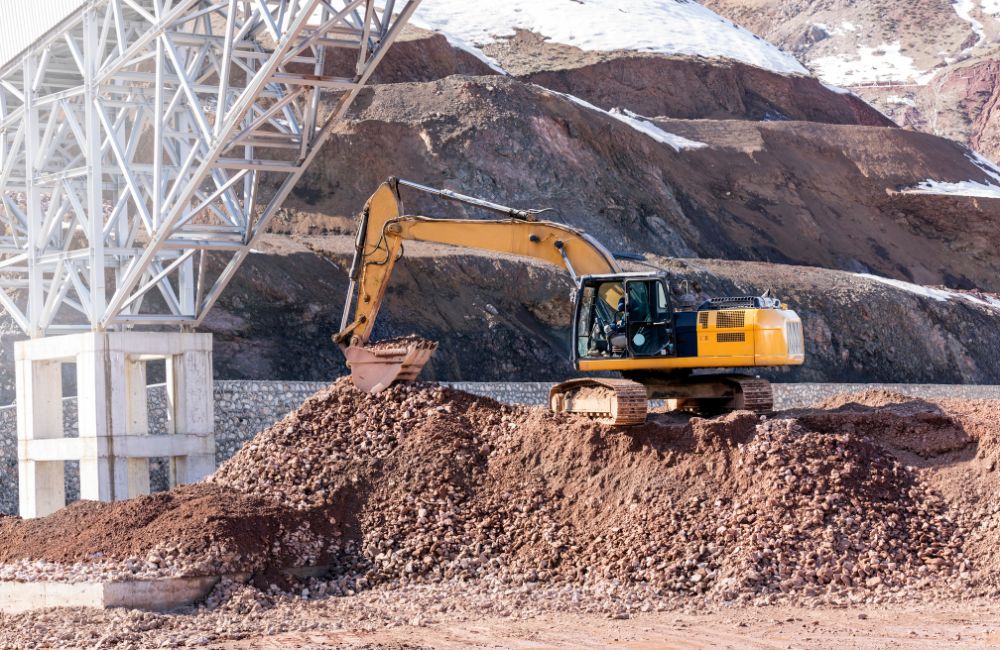
![[2025 UPDATE] Commercial Construction Cost per Square Foot in the US](https://www.clarisdesignbuild.com/wp-content/uploads/2025/04/2025-UPDATE-Commercial-Construction-Cost-per-Square-Foot-in-the-US-3.jpg)
